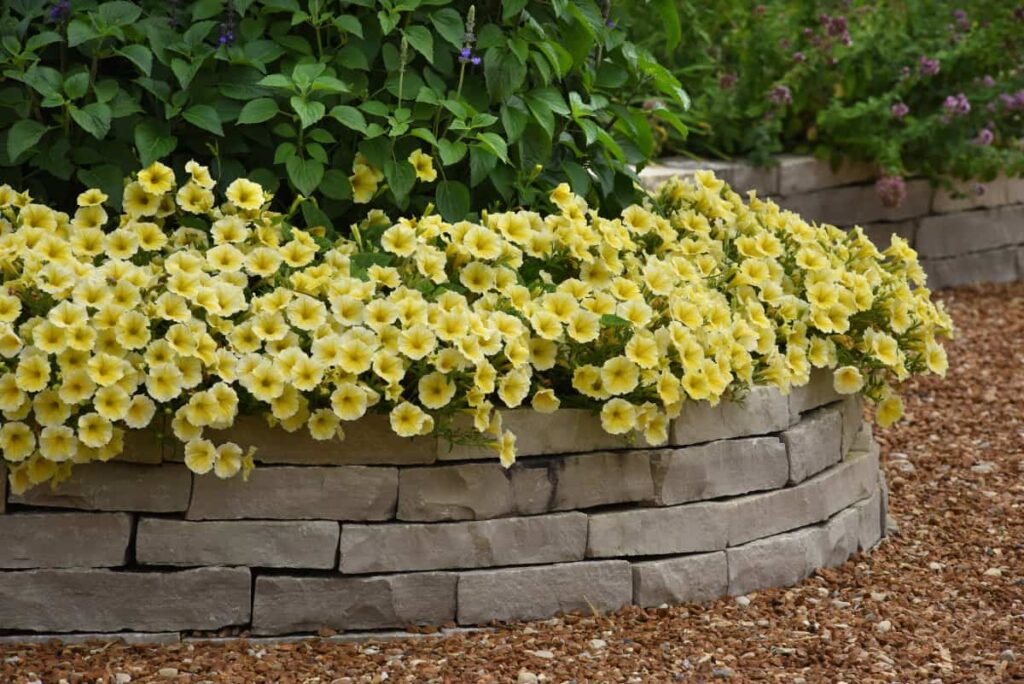
This annual comes in dozens of colors and patterns, lengths, heights and as a bonus, many of them are self-cleaning. I think petunias are kind of like geraniums (Pelargoniumspp.) in that they are frequently overlooked. Some gardeners may have memories of wimpy petunias of yesteryear, but the ones on the market, especially the premium annuals, are very much improved. They do well with six to eight hours of sun a day. Water and fertilize as needed. Petunias do great in the ground or in pots and window boxes.
In pots, petunias can be fillers and spillers, where they trail over rims. Many varieties, such as the Wave series, are great for the landscape, where they can sprawl into a flowering summer ground cover. I cut petunia strands for indoor arrangements, appreciating them for how they flow over the edge of the vase.
Sadly, many petunias lost their fragrance as they’ve been developed for other traits, such as self-cleaning or bigger blooms.
Some gardeners complain about petunias getting lanky by midsummer, but that’s an easy fix. Take a scissors or pruners and trim or shape up the petunia plant. Give it a shot of fertilizer. Within a couple of weeks the plant will be flowering.
The best-selling petunia for years was Supertunia Royal Velvet. Now Supertunia Vista Bubblegum is a top seller. Bee’s Knees with its bright yellow flowers and dense, sprawling habit, was a breeding breakthrough. It’s a 2022 All-America Selections winner.
BTW: Yes, petunias feel sticky or tacky. That’s normal. At least one theory is the tackiness protects the plant from bugs.